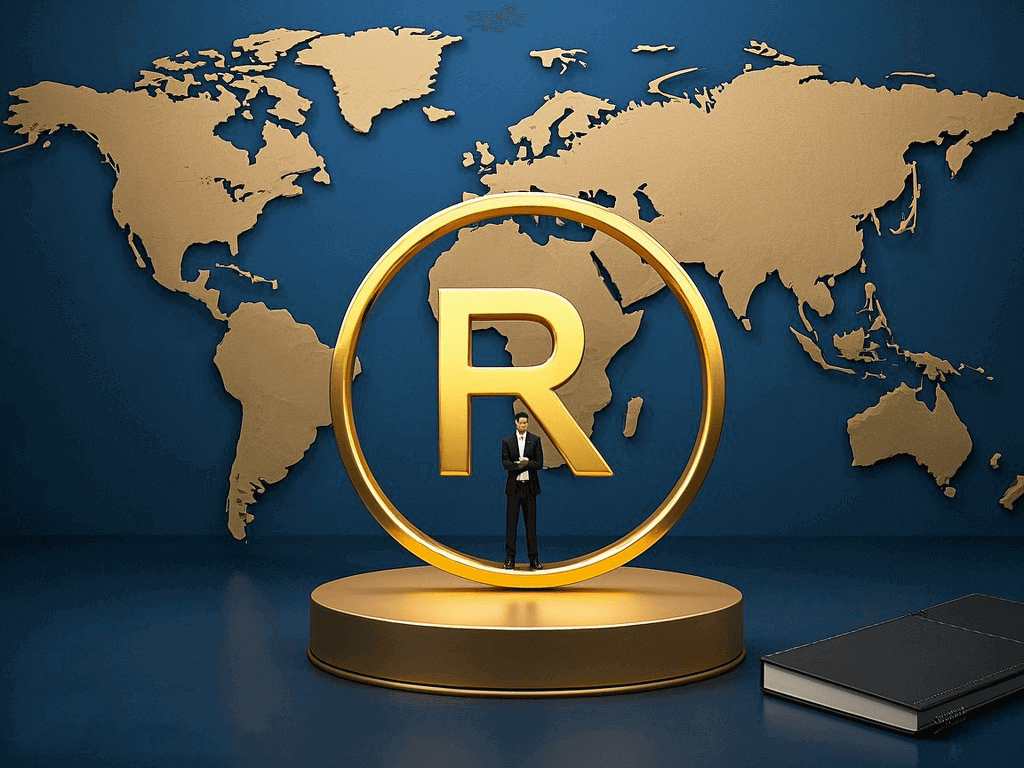International Trademark Strategy: How Enterprises Expanding Globally Should Prioritize Countries and Classes for Trademark Registration
 In today's globalized business environment, trademarks are not only the core assets of a company’s brand but also a "passport" to enter international markets. However, trademark protection is highly territorial in nature. Without registration, trademarks overseas may face the risk of squatting, infringement, or even legal disputes. Therefore, when expanding abroad, strategically planning the priority countries and classes for trademark registration is a critical step in building a brand's protective moat. This article offers systematic guidance from three dimensions: strategic framework, prioritization criteria, and common pitfalls.
In today's globalized business environment, trademarks are not only the core assets of a company’s brand but also a "passport" to enter international markets. However, trademark protection is highly territorial in nature. Without registration, trademarks overseas may face the risk of squatting, infringement, or even legal disputes. Therefore, when expanding abroad, strategically planning the priority countries and classes for trademark registration is a critical step in building a brand's protective moat. This article offers systematic guidance from three dimensions: strategic framework, prioritization criteria, and common pitfalls.
I. Prioritizing Countries: From “Business Needs” to “Risk Mitigation”
The core logic of international trademark planning is to “begin with the end in mind”—determine priorities based on strategic objectives, resource investment, and potential risks. The following four-tiered screening logic can help:
1. Existing Business Markets
Countries where products are already sold or soon to be launched.
Trademark registration usually takes 6–24 months (e.g., 8–12 months in the U.S., about 6–8 months in the EU), so companies should apply well before market entry.
Example: A smart hardware company planning to launch on Amazon U.S. must apply for a U.S. trademark a year in advance to avoid product delisting due to lack of trademark rights.
2. Potential Growth Markets
Regions targeted for expansion over the next 3–5 years.
Market potential can be assessed through industry trends, competitor moves, and local policy incentives.
Example: A new energy vehicle (NEV) company may prioritize the EU (driven by emission regulations) or Southeast Asia (rising EV adoption), not just areas with current limited sales.
3. Manufacturing and Supply Chain Hubs
Countries where OEMs or key component suppliers are located.
This helps prevent trademark squatting by manufacturing partners, which can hold the brand hostage.
Example: A fashion brand that didn’t register its trademark in Vietnam was later forced to pay a licensing fee to its own OEM, which had squatted the brand.
4. High Legal-Risk Regions
Countries with frequent squatting or strict examination processes.
Some nations are known as high-risk due to low squatting costs and weak enforcement.
Examples:
-
Japan: First-to-file system; squatting is common
-
India: Lengthy opposition procedures; frequent malicious registrations
-
UAE & Gulf States: Require local agents; complex procedures
Businesses should consider “defensive registration” in such areas.
II. Prioritizing Classes: From “Core Business” to “Associated Defense”
Trademark classification follows the Nice Agreement, which includes 45 categories. Enterprises must strategically cover relevant classes based on business scope and budget:
1. Core Business Classes
Directly correspond to the company’s products or services.
Examples:
-
Consumer electronics: Class 9 (electronics), Class 42 (software services)
-
Food & beverage: Classes 29–33 (foods, alcohol), Class 35 (retail services)
2. Related Expansion Classes
Cover upstream/downstream business or future plans.
Tech companies might also register:
-
Class 38 (data transmission)
-
Class 41 (online education)
FMCG brands might include: -
Class 21 (packaging), Class 16 (promotional materials)
3. Defensive Classes
Prevent brand dilution or “free-riding” by others.
Examples:
-
Luxury brands registering Classes 18 (leather goods), 25 (apparel), 3 (cosmetics) even if not currently selling those products
-
Internet platforms registering Classes 45 (social services), 36 (payment services) to protect the ecosystem
Tip:
For companies with limited budgets, a “core classes + key countries” strategy can be used first, followed by expansion through the Madrid System.
III. Common Pitfalls and How to Avoid Them
Pitfall 1: Registering in Only One Country, Ignoring Regional Systems
Solution: Utilize systems like the Madrid Protocol (covers 130+ countries), EU Trademark (27 countries), and OAPI (for Africa) to reduce cost.
Example: Extending via Madrid to 10 countries might cost less than registering in 5 countries separately.
Pitfall 2: Overly Narrow Class Selection, Leading to Protection Gaps
Example: An appliance brand registered only in Class 11 (household appliances), while a competitor used the same mark in Class 7 (industrial machines), causing consumer confusion.
Suggestion: Use trademark watch tools (e.g., TMView) to scan for similar marks and file supplementary registrations.
Pitfall 3: Ignoring “Use Requirements,” Leading to Trademark Cancellation
Countries like the U.S., Philippines, and Canada require proof of use within a specific period (e.g., between the 5th and 6th year in the U.S.).
Recommendation: Align product launch timelines accordingly and retain evidence such as sales records and promotional materials.
IV. Dynamic Strategy: Building a Long-Term Trademark Management System
International trademark layout is not a one-off task but should evolve with business growth:
-
Regular Review: Evaluate market expansion annually and adjust registration countries as needed.
-
Infringement Monitoring: Engage local firms in key countries to monitor new filings and oppose squatting in time.
-
Compliance: Respect cultural taboos (e.g., avoid religious symbols in the Middle East) to prevent rejections.
Conclusion
International trademark planning is essentially a “game of resources versus risks.” Companies must balance budget and protection scope: build depth in core markets, lay groundwork in growth markets, and erect barriers in high-risk areas. Only by integrating trademark strategy into their global branding roadmap can businesses navigate international waters with resilience and foresight.
(Note: Specific registration strategies should be tailored to industry characteristics, company size, and local legal environments. Consultation with professional IP firms is strongly recommended.)
Share this page
